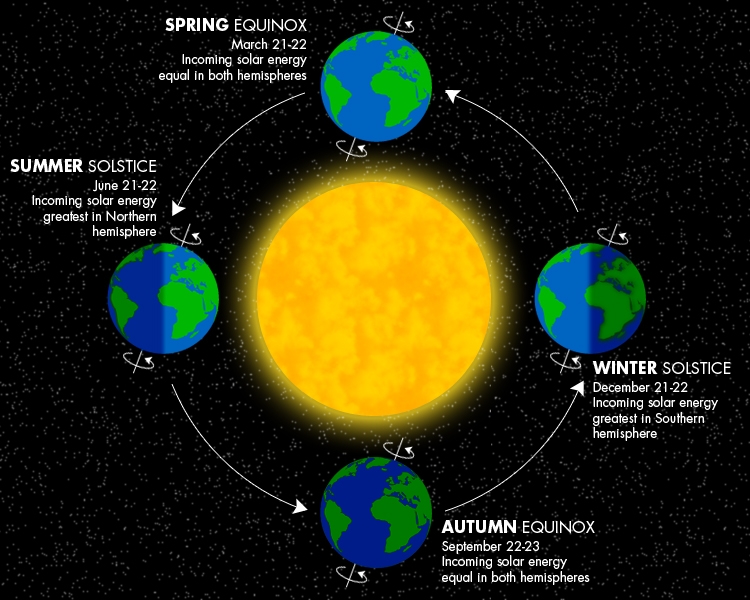
20 Jun Longest Day of the Year: Summer Solstice Arrives Saturday

In an article in Space.com Geoff Gaherty with Starry Night Education, Explains the Science behind the Summer Solstice.
The Earth will reach one of its four major way stations Saturday (June 21) during its annual trip around the sun.
The sun will reach its northernmost point in the sky — known as the summer solstice — Saturday. Earth’s closest star will seem to pause briefly before beginning its move southward again. In the Northern Hemisphere, this marks the longest day of the year.
Because of Earth’s tilt of 23.4 degrees to its orbit, the noon sun will appear to rise and fall in the sky over the course of the year. The two extremes of this apparent movement are called the solstices, derived from the Latin words for “sun stationary.” [Earth’s Solstices & Equinoxes (Infographic)]
If the solstice falls on June 21, why is it that the warmest days are usually a month or two later? That’s because it takes the Earth a while to warm up in summer and to cool down in winter. All of Earth’s seasons lag about six weeks behind the exact dates dictated by the geometry of Earth’s orbit. While many people think the solstices mark the start of summer and winter, they actually represent the midpoint of each season, even if it might not feel like it.


Sorry, the comment form is closed at this time.